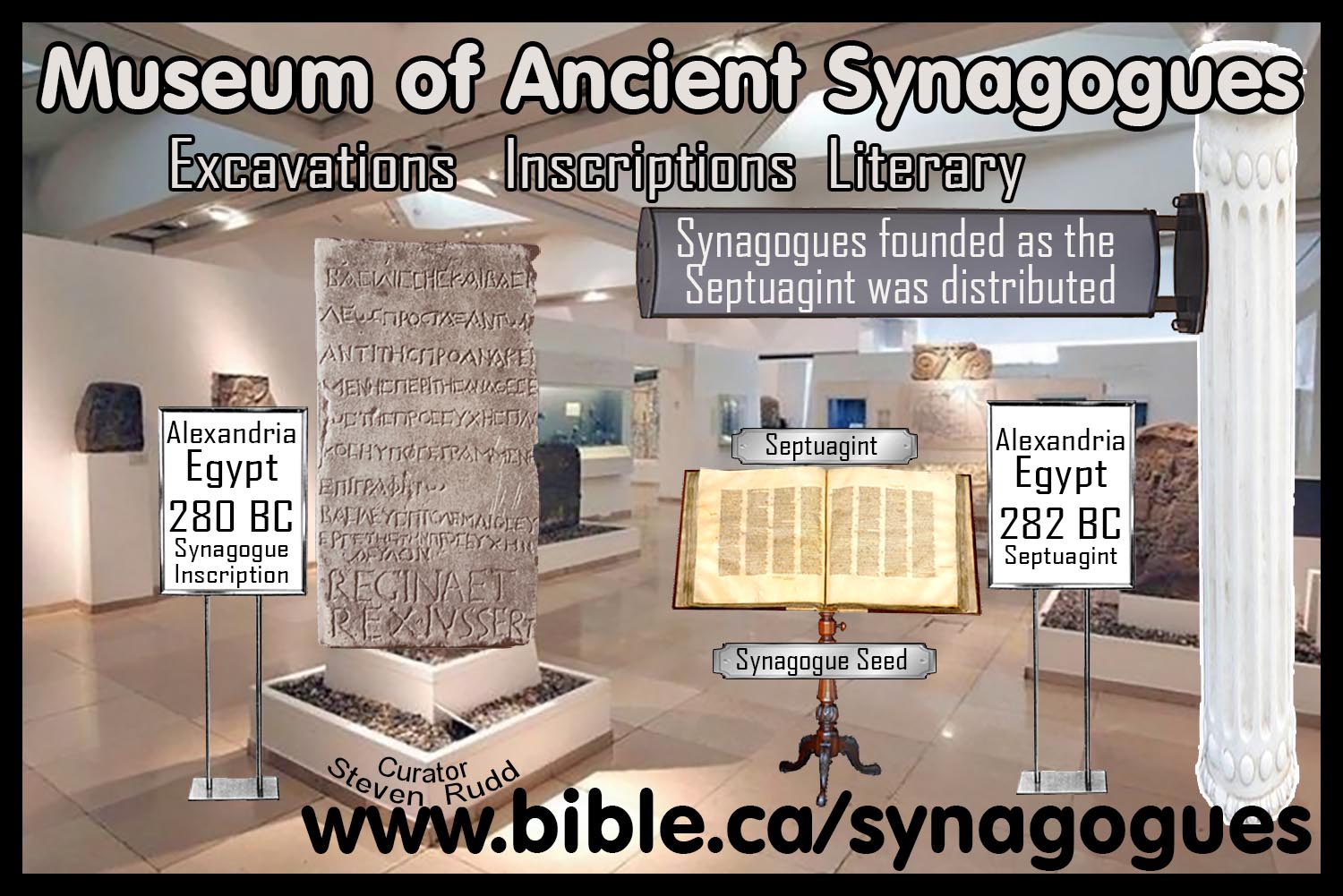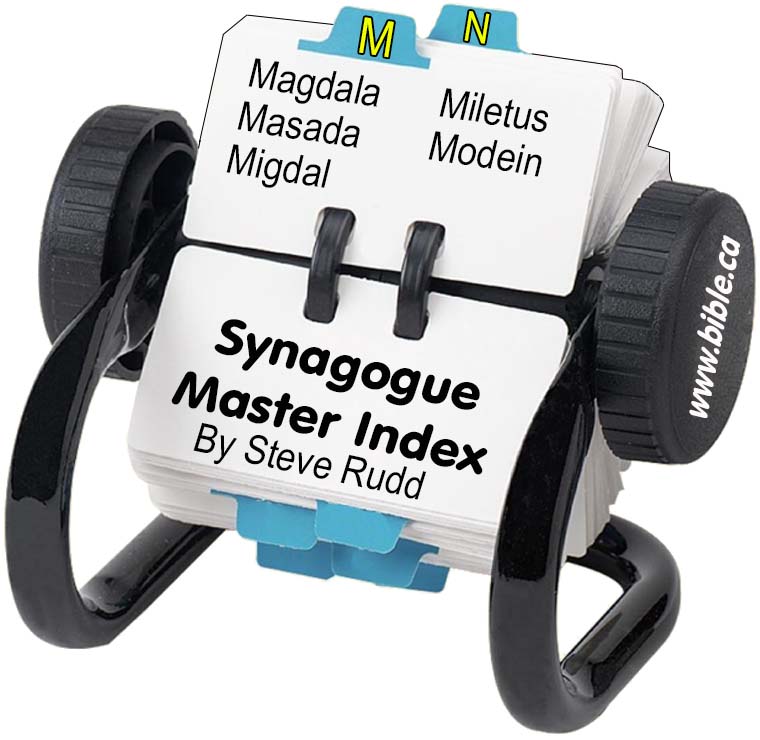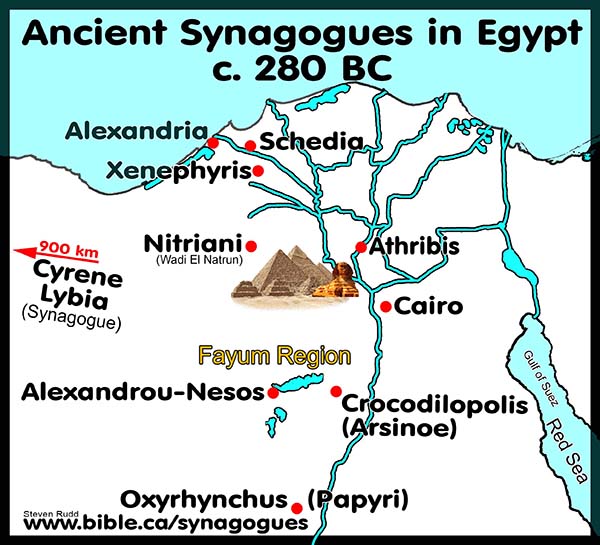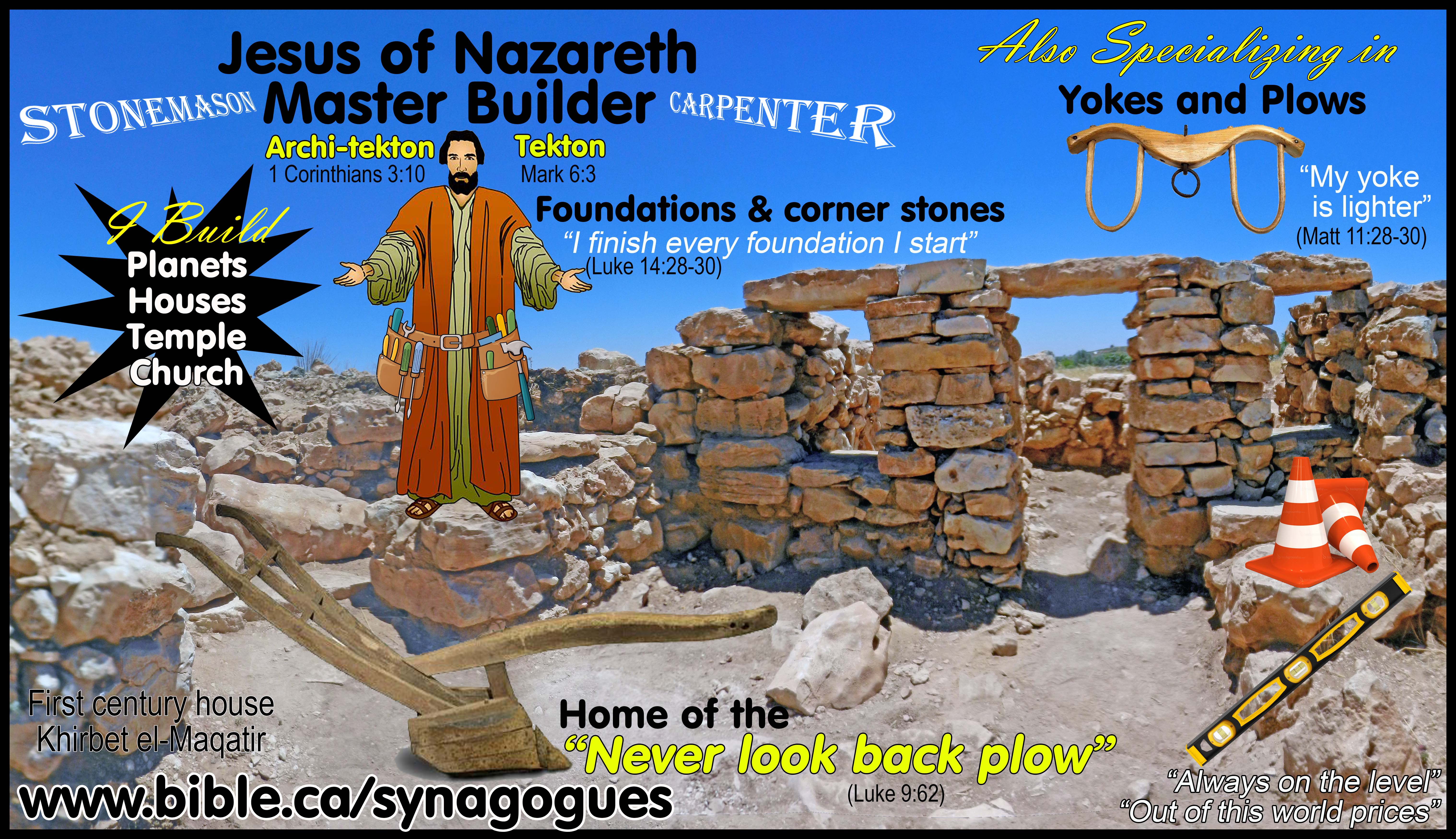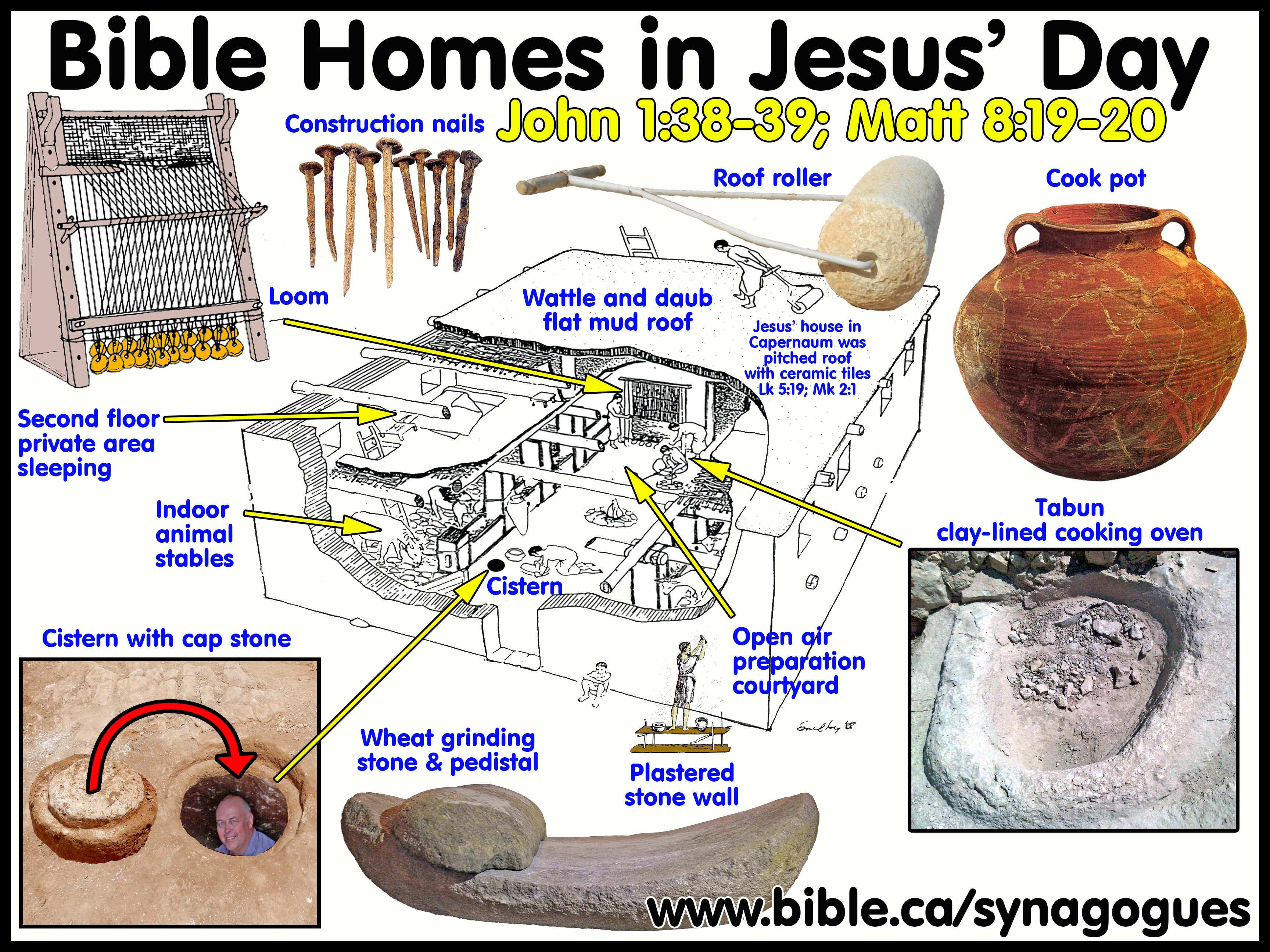Standardized Architectural Synagogue Signature Typology
Synagogue Architecture adopted by the Christian Church
Floorplans and Furnishings of Pre-70 AD Second Temple Period synagogues
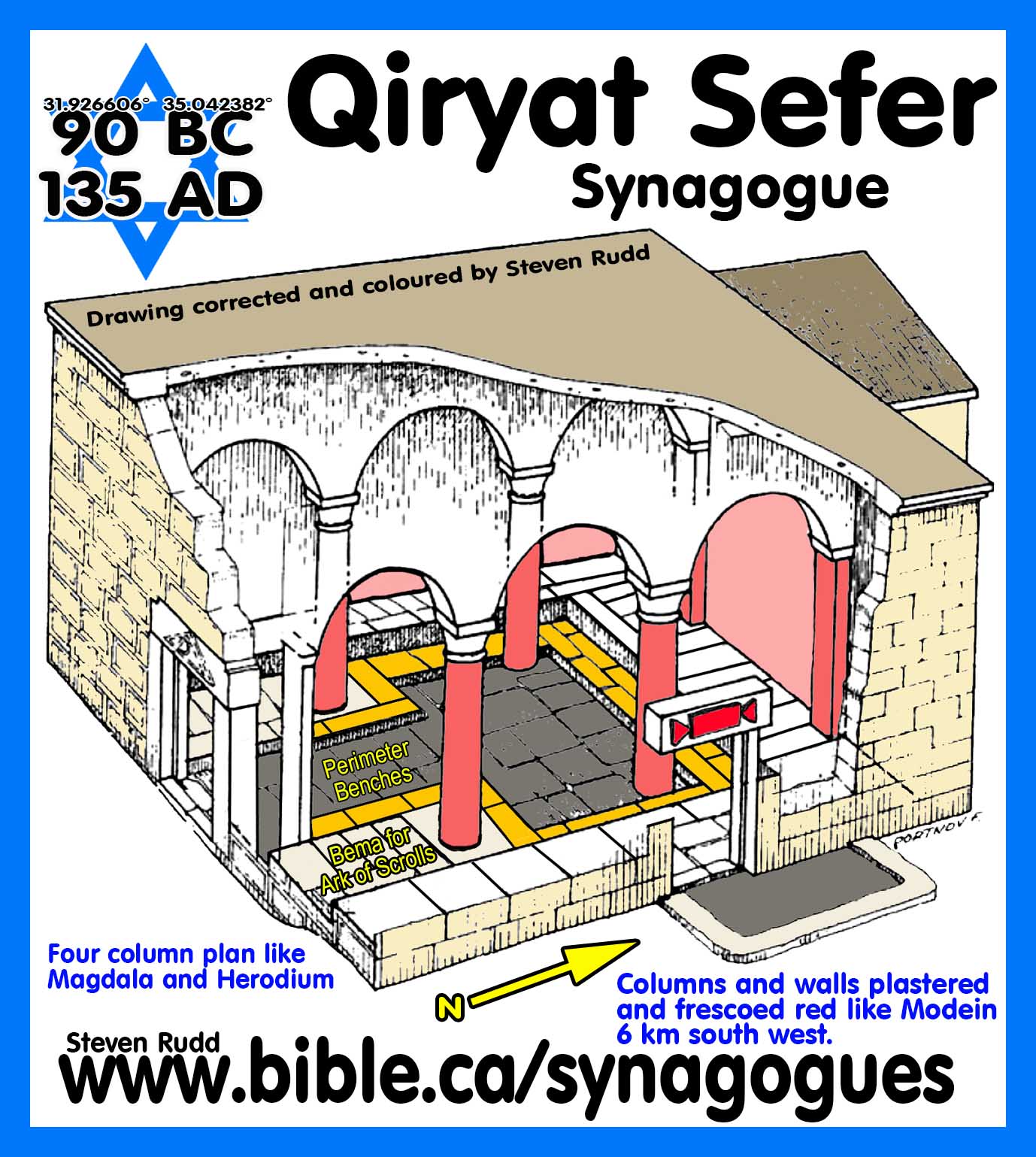
"There is neither Jew nor Greek,
there is neither slave nor free man,
there is neither male nor female;
for you are all one in Christ Jesus.
And if you belong to Christ, then you are Abraham’s descendants,
heirs according to promise." (Galatians 3:28–29)
|
SYNAGOGUE PERIMETER BENCHES: METAPHOR OF EQUALITY IN CHRIST: Jas 2:1-4; Gal 3:27 |
Synagogue perimeter seating emphasized the collective and was a physical visual metaphor for our equality in Christ:
"There is neither Jew nor Greek, there is neither slave nor free man, there is neither male nor female; for you are all one in Christ Jesus. And if you belong to Christ, then you are Abraham’s descendants, heirs according to promise." (Galatians 3:28–29)
1.
Ancient Synagogue seats were stone benches one to six rows high that
lined flush to three or four outside walls: Gamla, Qiryat Sefer, Migdol,
Magdala and many others.
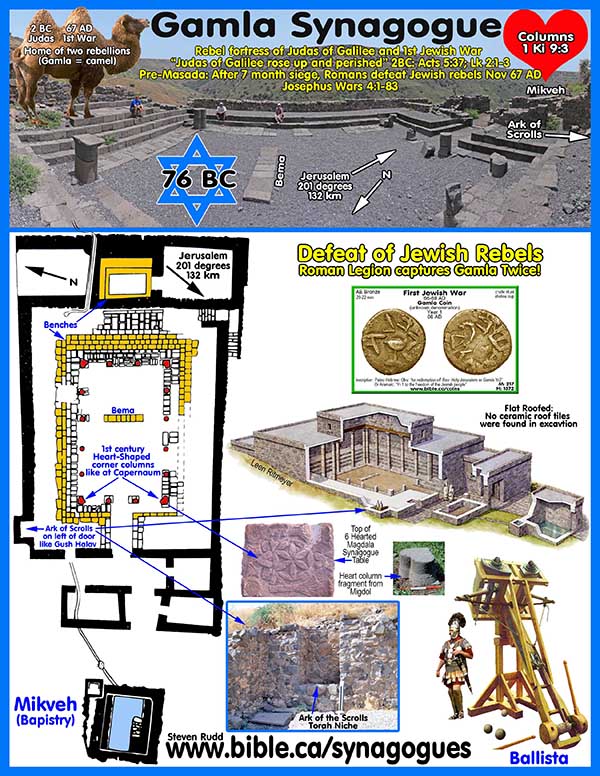
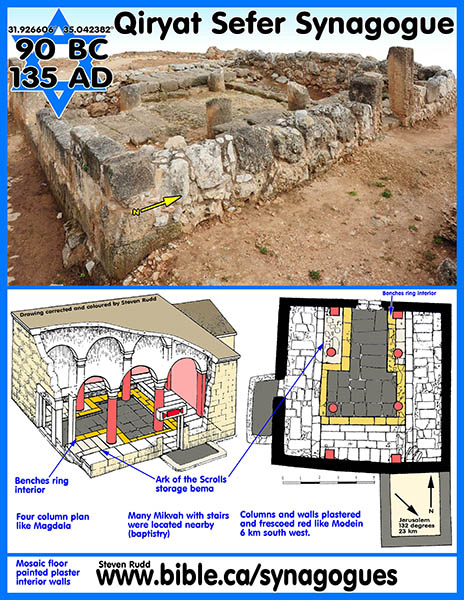
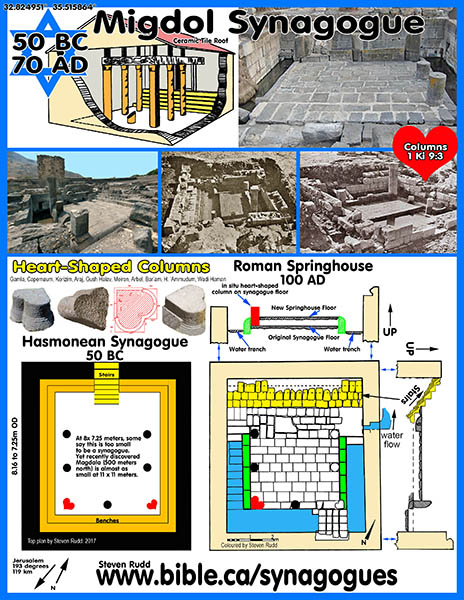
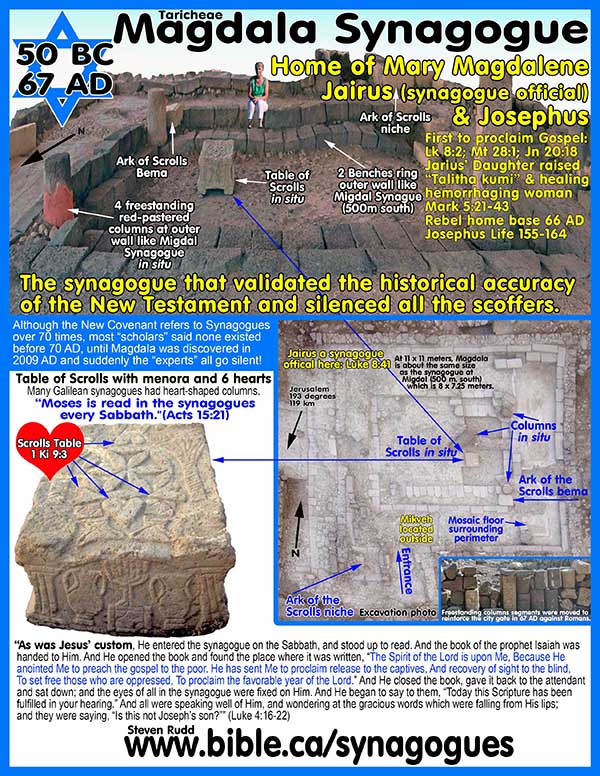
a. Gamla and Masada had benches on four sides of the hall, Herodium on three (possibly four), and Delos on two.
b. Likewise, the number and organization of these benches differed. At Delos there was a single bench, at Herodium two, an aisle and a single bench against the wall on three sides.
c. Masada had four benches on three sides and a single one on half of the fourth.
d. Gamla had the most extensive layout, with four benches on four sides, an aisle in back, and a single bench against the northeastern wall.
2. Synagogue perimeter seating was a dramatic departure from Temple worship:
a. Synagogue seating emphasized equality of each attendee as opposed to the Temple clergy/laity distinction and separation.
b. Synagogue benches were inward focused others in attendance and to the person reading or speaking as opposed to Temple worship where the focus was the Ark of the Covenant.
c. “Characteristic Features of Synagogues of the Second Temple Period: Certain features are common to the majority of the described structures (Fig. II-1; Hachlili 1988:84; Netzer 2003:282; 2004:22; 2007:13, 20*): (1) The most important and outstanding feature, and the central element in public buildings of the Second Temple period, is the stepped benches erected along the walls of the hall and facing the focal point in the center. They were constructed after installation of the wall and floors. The benches continued to be an essential aspect of the later synagogues of Late Antiquity. Regarding the function and role of these benches, it is clear that their placement directed the attention of those present to the focal point, in the center of the hall. The congregation sat there during the reading of the Torah, and during sessions of instructions, lectures, and political and social discussions, while the readers and lecturers either stood in the center or stood up in their place while leading, and the community members responded from their places. This layout of the hall functioned as a kind of theater in the round; all those sitting on the benches could watch and participate. ” (Ancient Synagogues - Archaeology and Art: New Discoveries and Current Research, Rachel Hachlili, p43, 2013 AD)
d. “They all express a high sense of community. especially in the arrangements of the benches around three or four walls so that members—presumably both male and female—could all be equally involved in the activities of the community There was nothing to focus the participant's attention elsewhere, no reflection of Jerusalem. no liturgical foci. and no distracting visual decoration.” (Building Jewish in the Roman East, Peter Richardson, p131, 2004 AD)
3. People of the same working trade would sit together in groups:
a. “Now these laws they are taught at other times, indeed, but most especially on the seventh day, for the seventh day is accounted sacred, on which they abstain from all other employments, and frequent the sacred places which are called synagogues [house of prayer], and there they sit according to their age in classes [working trades], the younger sitting under the elder, and listening with eager attention in becoming order.” (Philo, Good Man 81)
b. “Whoever has never seen the double colonnade [the basilica-synagogue 280 BC – 117 AD] of Alexandria in Egypt … “They did not sit in a jumble, but the goldsmiths sat by themselves, the silversmiths by themselves, the weavers by themselves, the bronze-workers by themselves, and the blacksmiths by themselves. [G] “All this why? So that when a traveller came along, [he could find his fellow craftsmen,] and on that basis he could gain a living” [T. Suk. 4:6]. [H] And who destroyed it all? It was the evil Trajan.” (Jerusalem Talmud, y. Sukk. 5:1, I.5.A–H, describing the second temple synagogue in Alexandria, 400 AD)
4. There were premium seats in synagogues just like in theatres today: “cheap seats” were directly behind pillars:
a. "In His teaching He was saying: “Beware of the scribes who like to walk around in long robes, and like respectful greetings in the market places, and chief seats in the synagogues and places of honor at banquets," (Mark 12:38–39)
b. Special synagogue seats were afforded a woman donor: “In some synagogues, special seats were reserved for prominent individuals. In Phocaea (Asia Minor), a woman named Tation, "having erected the assembly hall [oricos] and the enclosure of the open courtyard with her own funds, gave them as a gift to the Jews." This generous benefaction merited her a prominent seat (Trpoe-Spia) in the synagogue hall.'" Synagogue leaders or important visitors also may have had occasion to sit on the Cathedra of Moses, examples of which may have been discovered at a number of sites in Palestine and the Diaspora.” (The Synagogue in Late Antiquity, Lee Levine, p340, 1987 AD)
c. The best seats would be near the entrance where no column hindered a full view of proceedings. Very much like first class on an airplane is closest to the door. First in, first out.
d. Seating in Roman theatres was arranged with premium seats for the rich or important, just like modern sporting events.
e. Many of the seats would have an obscured view of the central area if they were near columns where up to 50% of the view was hidden from view. These may have been the “cheap seats” just like in modern theatres and sporting events.
5. While the Jews practiced preferential seating, this was condemned (corrected) in the church. James the apostle, beheaded in Acts 12 wrote in 36 AD to equip the Christians fleeing Jerusalem in Acts 8:1-4, to be careful not to show partiality in church assemblies. This was a corrective matter Jews practiced that was not tolerated in Christ. Notice James calls the assembly a SYNAGOGUE not an ECCLESIA in Jas 2:1-4. Later at the end of the book James uses “ecclesia” interchangeably with synagogue:
a. "My brethren, do not hold your faith in our glorious Lord Jesus Christ with an attitude of personal favoritism. For if a man comes into your assembly [synagogue] with a gold ring and dressed in fine clothes, and there also comes in a poor man in dirty clothes, and you pay special attention to the one who is wearing the fine clothes, and say, “You sit here in a good place [ie. Center unobstructed view],” and you say to the poor man, “You stand over there [behind column], or sit down by my footstool [beside Moses seat],” have you not made distinctions among yourselves, and become judges with evil motives?" (James 2:1–4)
b. "Is anyone among you sick? Then he must call for the elders of the church [ecclesia] and they are to pray over him, anointing him with oil in the name of the Lord;" (James 5:14)
6. Women and men were not segregated in synagogue seating: Men, women and children all worshipped together exactly like in churches today:
a. “Any indications of a separation between men and women were also absent from early synagogues. None of the ones described, or other potentially pre-70 buildings, had a gallery that might hi: held to be a women's gallery. If there were to be a division between men and women, it would have had to be by means of a barrier in the middle of the benches. Yet the space itself, with all participants, looking at each other from the benches around the walls, was designed to highlight the communal, almost democratic, character of the space. It is unlikely that the builders would have created a space that expressed the community's oneness and then have subdivided it in such a way as to call that sense of oneness into question.” (Building Jewish in the Roman East, Peter Richardson, p130, 2004 AD)
b. Sardis synagogue imperial decree in 94 BC: “The decree of the Sardians. “This decree was made by the senate and people upon the representation of the praetors:—Whereas those Jews who are our fellow-citizens, and live with us in this city, have ever had great benefits heaped upon them by the people, and have come now into the senate, (260) and desired of the people, that upon the restitution of their law and their liberty, by senate and people of Rome, they may assemble [synagogue] together, according to their ancient legal custom, and that we will not bring any suit against them about it; and that a place may be given them where they may have their congregations, with their wives and children, and may offer, as did their forefathers, their prayers and sacrifices to God. (261) Now the senate and people have decreed to permit them to assemble together on the days formerly appointed, and to act according to their own laws; and that such a place be set apart for them by the praetors, for the building and inhabiting the same, as they shall esteem fit for that purpose: and that those that take care of the provisions for the city, shall take care that such sorts of food as they esteem fit for their eating, may be imported into the city.” (Josephus, Antiquities 14.259–261: decree: 94 BC)
c. “Women in the Synagogue: Women frequently attended the synagogue and were present during worship. According to rabbinic traditions and various literary sources from the 2nd c. CE, their presence in the synagogue was acknowledged and accepted, with no distinctions in seating for males and females (Levine 2000:472-74). The main questions and issues concerning women in the synagogue are (Hachlili 1998:23-24): What was the position of women in Jewish society? was the woman's place only considered to be domestic? Did women participate in synagogue worship? Where did they take part? Was it in a special section of the building? Separately from men? Did women have functions, tasks, or any official titles indicating that they took part or held office in the management or leadership of the synagogue? The position of women in ancient synagogues is attested by inscriptions, as well as rabbinical and literary sources, that indicate female participation in synagogue services. Brooten (1982:149) claims that female office-holders were considered equal to the male officials. Trebilco (1991:104-126) shows that some Jewish communities in Asia Minor gave an unusually prominent position to women. Rajak and Noy (1993:87) maintain that "the contribution of women, just as that of men, must be envisaged as paternal and perhaps ceremonial rather than religious." Women appear in numerous Diaspora inscriptions as donors, title-holders, office-holders and benefactors, and may have been wealthy in their own right. Inscriptions were found commemorating women who donated by themselves or with their husbands, or who are commemorated by a donation on their behalf. Many of these inscriptions were discovered in Diaspora synagogues, for example at Delos, Apamea, Hammam-Lif and Sardis (Brooten 1982:141-144; appendix nos. 7-15, 30-34, 39-40, 22, 25-27; Hachlili 1998:84-85). ” (Ancient Synagogues - Archaeology and Art: New Discoveries and Current Research, Rachel Hachlili, p579, 2013 AD)
d. Discussion about both opinions of whether women are segregated from men or not: “Did Women Participate in a Special Section of the Synagogue Building, Separately from Men? Much effort has been invested in the attempt to answer the provocative question of where women prayed in ancient synagogues, and many answers exist. One group of scholars insist on the separation between men and women in the synagogue, others maintain that no separation existed. [Begin discussion that women were segregated:] Women occasionally showed great interest in what went on in the synagogue. They might have prayed in separate rooms, or stood outside, or, for the most part, might not have attended synagogue at all (Goodenough 1953, 1:210, 226, 228; 11:74; 1964, 1X:32). A women's section was either located in a gallery, or was separated from the men's section by a lattice or other barrier (Krauss:356-7; Jeremias:374). Mattila (1996:282-83) concludes that "the vast majority of women in the ancient synagogue did not sit in a seat of honor ... they probably sat separately from the men." Segregated seating arrangments were characteristic of other Greco-Roman cultures as well. It was customary for women in the synagogue to be part of the assembly but as a separate group, probably seated in galleries, or in the same room with men but beside or behind them and with or without a barrier or a space between the two groups (Horbury 1999:387). It is suggested that women prayed in a side room at the Diaspora synagogues of Aegina, Delos and Hammam-Lif At Delos, for example, a division between rooms A and B and room C has been suggested. But, the precise function of these rooms has not been proven, nor is there any reason to designate them specifically for women (Brooten 1982:137). Women were allowed in the assembly hall with the men, but were confined to a separate section. In the later synagogue of Dura Europos the women worshipped with the men, but were assigned to separate benches (Kraeling 1979:16, 23-24, but see Brooten 1982:129). Kraeling suggests that a 'portable and makeshift' partition may have separated the men and the women. [Begin discussion that women were NOT segregated:] Other researchers propose that no separation for women existed in the synagogue structure, for a number of reasons: No rabbinical sources indicate a separate section for women. There was no separation of men and women in synagogue worship. This seems to be the only correct conclusion, based on evidence available from archaeology, rabbinical sources and literature. Synagogue galleries were not in use as a separate women's section (S. Safrai 1963; Brooten 1982:137; 2000:223; Z. Safrai 1989:78-9; Levine 2000:473-4, 477, 489). There is also no hierarchical seating in the synagogue, except perhaps for the synagogue elder, who had a special seat (see the seat at the Dura Europos and 'En Gedi synagogues, Fig. IV-43 on the right). Scholars generally suggest that the gallery served as the women's section, which implies that segregation existed between men and women in the synagogue (Sukenik 1934:48; Avi-Yonah
1961:164; Goodenough I, 1953:182). At Hammath Tiberias B, Dothan (1981:65; 1983:24, plan C) asserts that the eastern aisle of the early synagogue (at level IIb) may have been intended for female worshippers, with a temporary partition being placed between the columns during prayers. Shmuel Safrai (1963; 1976:939), followed by Z. Safrai (1989:78-9), objects to the view that there was a separate section for women, stating that he finds no indication of segregation in Talmudic literature, and maintains that women probably gathered along the walls or sat on the back benches; furthermore, he states that as there is no reason to allocate them to the balcony, the gallery must have served other purposes. THAT WOMEN WORSHIPPED TOGETHER WITH THE MEN SEEMS TO BE THE ONLY CONCLUSION THAT CAN BE DRAWN FROM THE INSCRIPTIONS AND THE ARCHAEOLOGICAL AND LITERARY EVIDENCE. IN ANY CASE THE CONTRARY OPINION, THAT WOMEN WORSHIPPED IN A GALLERY OR IN A SEPARATE SECTION OF THE HALL, HAS NOT BEEN PROVEN (Hachlili 1998:24). ” (Ancient Synagogues - Archaeology and Art: New Discoveries and Current Research, Rachel Hachlili, p280, 2013 AD)
7. Women held no leadership roles in the synagogue: Like the church, women in synagogues did not hold formal offices of authority.
a. “Women in Office: Though they were probably exceptional, these titles suggest that women were functionally parallel to the men who bore such titles (Brooten 2000:223). Based on present knowledge, it seems that in the synagogues of the Land of Israel (in contrast to those of the Diaspora), women did not hold titles or office in the synagogue or the community.” (Ancient Synagogues - Archaeology and Art: New Discoveries and Current Research, Rachel Hachlili, p581, 2013 AD)
b. "A woman must quietly receive instruction with entire submissiveness. But I do not allow a woman to teach or exercise authority over a man, but to remain quiet." (1 Timothy 2:11-12)
c. The Holy Spirit in the New Testament puts an outright ban on women preachers, elders, taking leading roles in leading singing, communion or prayers.
d. In this regard, churches carried forward the Jewish tradition of male leadership, which in turn traces back to the garden of Eden.
e. Of course in Christ, men and women are spiritually equal as seen in the warning to husbands to treat their wives as equals or their prayers will be hindered. There is nothing like this warning in the entire Old Testament where a man’s spiritual connection with God had be hindered NOT if he touches a women or sleeps with his wife, but HOW HE TREATS HER: "You husbands in the same way, live with your wives in an understanding way, as with someone weaker, since she is a woman; and show her honor as a fellow heir [equal] of the grace of life, so that your prayers will not be hindered." (1 Peter 3:7)
8. Synagogue perimeter seating therefore, emphasized the collective and became a physical visual metaphor for our equality in Christ: James 2:1-4; Gal 3:28-29
a. "There is neither Jew nor Greek, there is neither slave nor free man, there is neither male nor female; for you are all one in Christ Jesus. And if you belong to Christ, then you are Abraham’s descendants, heirs according to promise." (Galatians 3:28-29)
By Steve Rudd 2017: Contact the author for comments, input or corrections
|
Jesus your messiah is waiting for you to come home! |
|
|
Why not worship with a first century New Testament church near you, that has the same look and feel as the Jewish Synagogue in your own home town. As a Jew, you will find the transition as easy today as it was for the tens of thousands of your forefathers living in Jerusalem 2000 years ago when they believed in Jesus the Nazarene (the branch) as their messiah. It’s time to come home! |
|
By Steve Rudd: Contact the author for comments, input or corrections.
Go to: Main Ancient Synagogue Start Page
